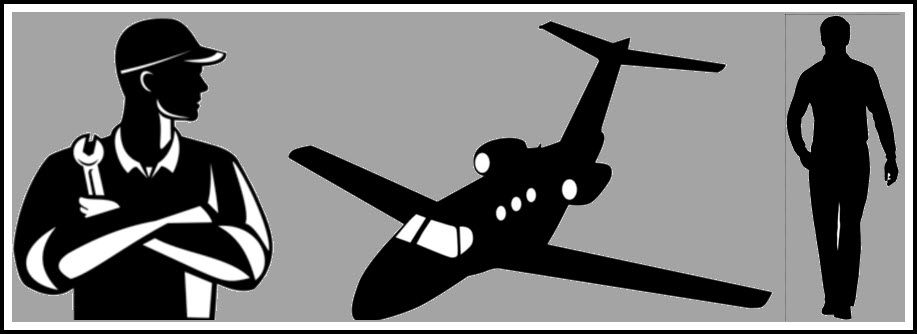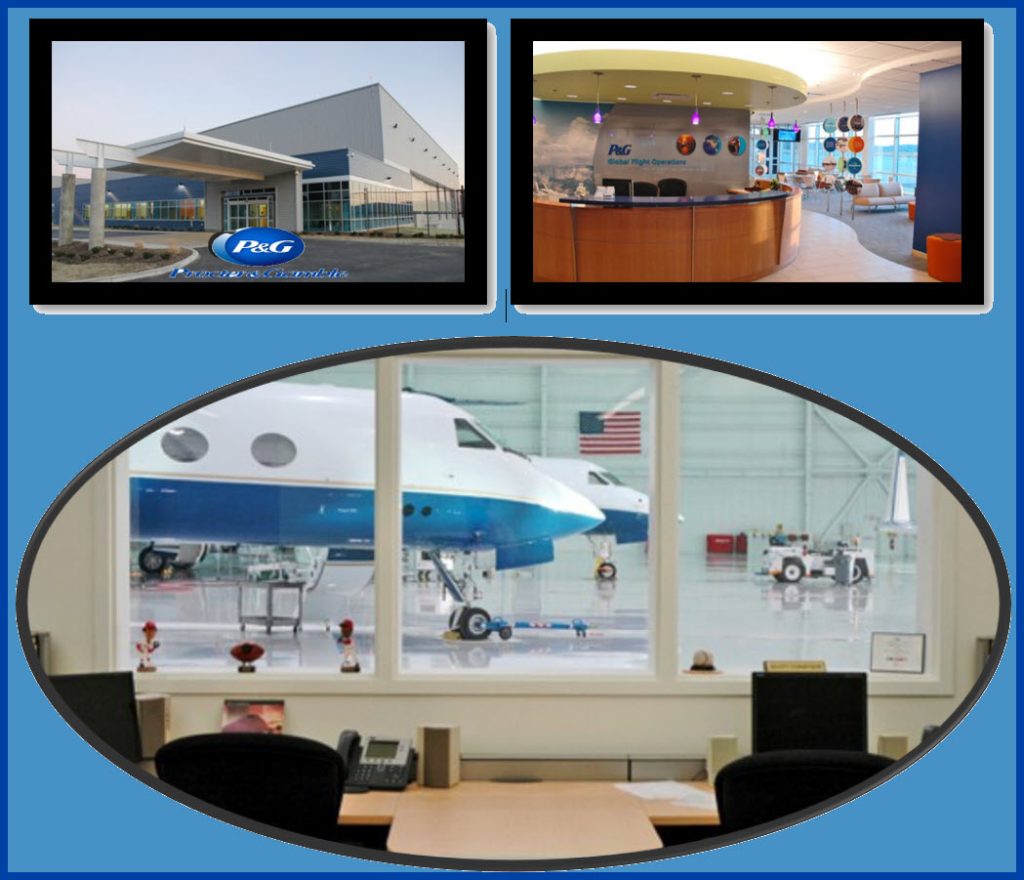NBAA’s “perception= reality” plus some emphasis

As usual, NBAA has published an excellent real world explanation of how the aphorism “Perception is Reality” applies to business aircraft operations. The media’s heightened attention to safety issues has distressed more than a few passengers. In that context, this paper describes A NUMBER OF PRACTICAL TECHNIQUES TO ASSUAGE THE FEARS OF MEMBER FLIGHT passengers. Sage advice for that relationship. The paper mentions in the closing section the need to assure that the basis of the PERCEPTION is a strong SAFETY CULTURE.
Based on our experience, even though the point of this article is to make sure that the people flying on these flights realize that this operation is SAFE. The list of tactics clearly provide the reader with exceptional insights on how to diminish the angst being created by the media and not supported by the statistics
Business aviation organizations are expected to assess their safety culture as part of their Safety Management System (SMS),.
Benefits of auditing include:
- Internal accountability: Encourages ownership of safety outcomes.
- Tailored insights: Organizations can adapt assessments to their unique operational contexts.
- Early detection: Identifies cultural drift before it manifests in incidents.
Realistically, objectivity is notoriously difficult when assessing one’s own culture. According to a literature review by the FAA, organizations often struggle to:
- Identify RISKs that exist in a peer’s function and have not been address. After the audit, the person identified may resent the internal auditor’s suggesting fault.
- Link safety culture assessments to actual safety outcomes.
- Develop reliable and valid measurement tools.
- Interpret results without bias or defensiveness.
And an internal examination can only work if:
- Psychological safety: Employees must feel safe to speak candidly.
- Leadership commitment: Leaders must model openness and act on findings.
- External benchmarking: Comparing results with peer organizations or using third-party facilitators can reduce bias.
- Structured tools: Frameworks like the Singapore Aviation Safety Culture Handbook offer guidance on dimensions to assess—like leadership, communication, and learning orientation.
JDA, as an external assessor, has found that its independence facilitates honest identification of policies, practices, procedures and paperwork that should be carefully reviewed. Here is a description of what we look for and how our experienced safety professionals turn the information found into useful, objective action list:
- Examine why something works.
- Anticipate what happens when it doesn’t.
- Identify what they don’t want to occur.
- Foster communication between departments.
- Define formal, standardized, and documented tools and processes that manage safety risk,
- Define, document, and describe all existing procedures and proposed changes.
- Collect, analyze, and categorize data on safety issues, concerns, incidents, and accidents.
- Conduct analysis using hazard-based risk assessment tools to identify and assess the risks of the hazards.
- Determine acceptability of the risk, for each hazard identified, using risk matrix.
- SELECT APPROPRIATE CONTROLS TO MITIGATE THE RISK OF IDENTIFIED HAZARDS.
After our engagements, the aviation organizations have complimented the depth of the team’s findings and the reduction of internal silos that our external audits may have fostered.
A strong PERCEPTION of SAFETY can ONLY EXIST when the PROFESSIONALS responsible for reducing risk KNOW that they have DONE THEIR BEST. Less than such confidence and the “image” projected may be seen as transparent. While independent assessments involve added expense, the increased level of SAFETY INTEGRITY is visible as the enhancements are implemented. Here’s a link to such outside expertise!!!
Perception Is Reality’ – Why It’s Important to Show Your Dedication to Aviation Safety
Sept/Oct 2025
Experts explain the BENEFITS of demonstrating safety accomplishments to company leaders, passengers and the public – ESPECIALLY NOW, after several recent accidents, incidents and near misses across the industry.
“Our industry must not only be safe, it must also be perceived as safe.” That credo, frequently cited by NBAA President and CEO Ed Bolen, has gained added significance in the wake of several high-profile aviation accidents in 2025, some involving business aircraft and many of which have also received extensive media coverage and public scrutiny.
At a moment when safety is not only of paramount importance to aviation stakeholders but also a concern throughout the general public, flight operations must be able to EFFECTIVELY DEMONSTRATE THEIR COMMITMENT TO SAFE OPERATIONS to company leaders, passengers and others.
ZACH DUNN, safety and security manager and former aircraft maintenance technician at The Procter & Gamble Company, said that begins with ensuring all aircraft and hangars are kept clean, and personnel maintain a professional appearance and atmosphere.
“We strive for professionalism and integrity, always,” Dunn said. “That really goes a long way toward people’s perception that we are a great operation. When passengers see our operation, our hangar, our planes and our people, no question is left unanswered in their minds about our dedication to safety and customer service.
“Our passengers only see a very small piece of the pie, so often they don’t realize all the effort and the safeguards in place to make their customer experience as flawless as possible.”
Zach Dunn Safety and Security Manager/Former Aircraft Maintenance Technician, The Procter & Gamble Company
“Our passengers only see a very small piece of the pie, so often they don’t realize all the effort and the safeguards in place to make their customer experience as flawless as possible.”
Presenting a positive safety impression also includes special consideration for passengers who may be nervous about flying. “Most people’s fear of flying comes from a lack of understanding, or the lack of control,” said JON POTTS, CAM, a captain at Procter & Gamble and the company’s previous safety officer.
“Some people are nervous to be passengers, even when in a car,” Potts said. “They can’t grab the wheel, so to speak, if there’s an emergency in flight.”
To counter those concerns, “it really comes back to demonstrating a calm, confident and professional demeanor,” said Potts. “Take a moment to explain the expected conditions for today’s flight, and how we as a crew will mitigate any risks. ‘We’re going to avoid those thunderstorms. We’re not going in there.’”
“It’s important that your passengers see that the crew has the knowledge, experience and – most importantly – a plan to operate safely, today and every day.”
Jamie Stember, CAM Fellow Pilot/Manager, Eagle Aircraft and Transportation Management
“You need to read the room,” said Jamie Stember, CAM Fellow and a longtime business aviation pilot and manager who currently flies for Eagle Aircraft and Transportation Management. “It’s important that your passengers see that the crew has the knowledge, experience and – MOST IMPORTANTLY – A PLAN TO OPERATE SAFELY, TODAY AND EVERY DAY. Ultimately, they wouldn’t board your airplane if they didn’t trust you.”
Company leaders are also kept informed of industry accreditations such as the International Standard for Business Aircraft Operations (IS-BAO), Stember said, as well as certificates of achievement and both internal and external reports on operational safety culture.
“We keep them apprised of what’s going on in our flight department; we don’t keep them in the dark,” said Stember. “That goes back to the need for transparency, which is accomplished through clear communication.”
Company Efforts to Promote Aviation Safety
The perception of safety can help drive best practices and professional attitudes that help foster such operating environments. However, everyone involved must work to ensure that the image of safety doesn’t supplant a flight operation’s actual, and effective, safety culture.
Potts said safety is always on the agenda in meetings between the chief pilot and director of maintenance.
“Meeting topics frequently include safety-related items; it’s not just about the budget,” Potts explained. “They’re genuinely interested in safety, and they know about our FOQA [flight operations quality assurance] program and the results of our INTERNAL COMPANY CULTURE SURVEYS. They don’t micromanage, but they are involved.”
Company leaders are also invited to internal safety events such as emergency response plan (ERP) drills, department meetings and P&G’s annual Safety Standdown, Potts said, with a safety-related training event geared toward the company leadership under development.
“I think that level of involvement shows that leadership is dedicated to safety,” Dunn added.
Stember also noted his company’s efforts to promote a positive safety culture that is apparent to passengers. “We’re given all the tools we need to make the right decision,” he said. “Because there’s an immense amount of trust pushed down from executive leadership, the folks on the line doing the day’s work feel that they’re empowered to make the right decisions.
“They don’t want to violate that trust,” Stember said, “and, fundamentally, they all want to come back home at the end of the day.”
When it comes to engaging with company executives on safety, “it’s not just about the signature at the bottom of the safety policy,” said Dunn. “Make sure that top-level leadership understands what the SMS [safety management system] is and the importance of it.”
Potts also noted the benefits of being able to trade ideas with Dunn, his successor as company safety officer at P&G, and he shared his experience in that role.
“The best advice is to reach out,” Potts said. “Mentor the next generation and benchmark best practices in other departments. Reach out to your organization’s previous safety officers who have expertise, or those in safety-equivalent positions elsewhere in the company.
“They may not be operating aircraft, but they may deal with heavy equipment and high-pressure lines,” said Potts. “The environments are similar and they’re going to experience similar issues. They may have had more success targeting different [performance indicators]. And they may even have better ideas.”
Experience Should Meet Expectations
Effective transparency and communication between the company flight department and the executive team in the C-suites must also go both ways. “It comes down to expectations and experience,” said Stember. “As long as experience meets expectations, there’s no conflict. But you’re going to have issues when that gap starts to widen.
“If you are working for a principal or a company where they’re constantly pushing your safety boundaries, then you’re in the wrong place,” Stember said. “Remember, ‘no’ is always a complete sentence. Go match up your safety tolerances with a more conservative organization that aligns with your expectations, and where you feel the freedom to say ‘no, we can’t do that.’”
“You also must not ever lose that [safety] focus,” Potts said. “The people you put into any role must be well-trained and educated and have the opportunity to gain more and more experience. Zach and I are lucky that our company supports that.”
Stember also highlighted the importance of company support. “I know I have my company’s trust,” he said. “We don’t want for anything the industry has to offer as far as safety, and that allows me to demonstrate that level of professionalism and confidence to our customers.
“Perception is reality,” Stember said. “You can hang all the signs on the wall you like and use all the slogans you want, but at the end of the day, it all comes down to how you execute.”
Dunn likened a company’s safety focus to the Energizer Bunny TV commercials. “We all must keep on beating that safety drum,” he said. “If you’re always promoting participation and continuous improvement, it’s going to happen.”
What the Stats Say About Safety
Photo © John Harrington Photography
Increased public attention on fatal aircraft accidents and widely reported technical and personnel challenges at air traffic control facilities add to the popular misperception that it’s more dangerous to fly today than any other time in recent memory.
However, while public attention to general aviation accidents has certainly increased, NTSB DATA indicates there have been fewer total and fatal aviation accidents in the U.S. in 2025, as of this writing, compared to last year.
The first month of 2025 saw a midair collision involving a regional airliner and U.S. Army Black Hawk helicopter in Washington, DC, followed days later by the downing of a Mexico-registered Learjet 55 air ambulance in Philadelphia.
However, NTSB data shows there were 13 fatal U.S. aviation accidents through Feb. 18, compared to 31 during the same period in 2024. Through April 24, the NTSB logged 250 accidents, with 215 fatal, whereas 2024 saw 180 fatal accidents over 1,199 total in the same timeframe.
That overall trend appears to be continuing as 2025 goes on, with one disquieting exception: a worldwide increase in business aviation fatalities.
The first half of 2025 saw 18 fatal turbine business aircraft accidents worldwide claiming 81 people, up from 17 accidents with 54 fatalities in the first six months of last year, according to Aviation International News. Three fatal accidents involved N-registered business jets over that period, the same as in 2024.





